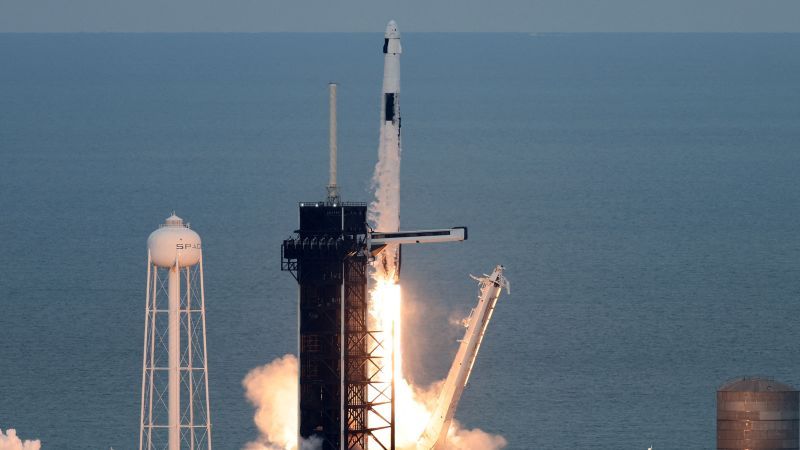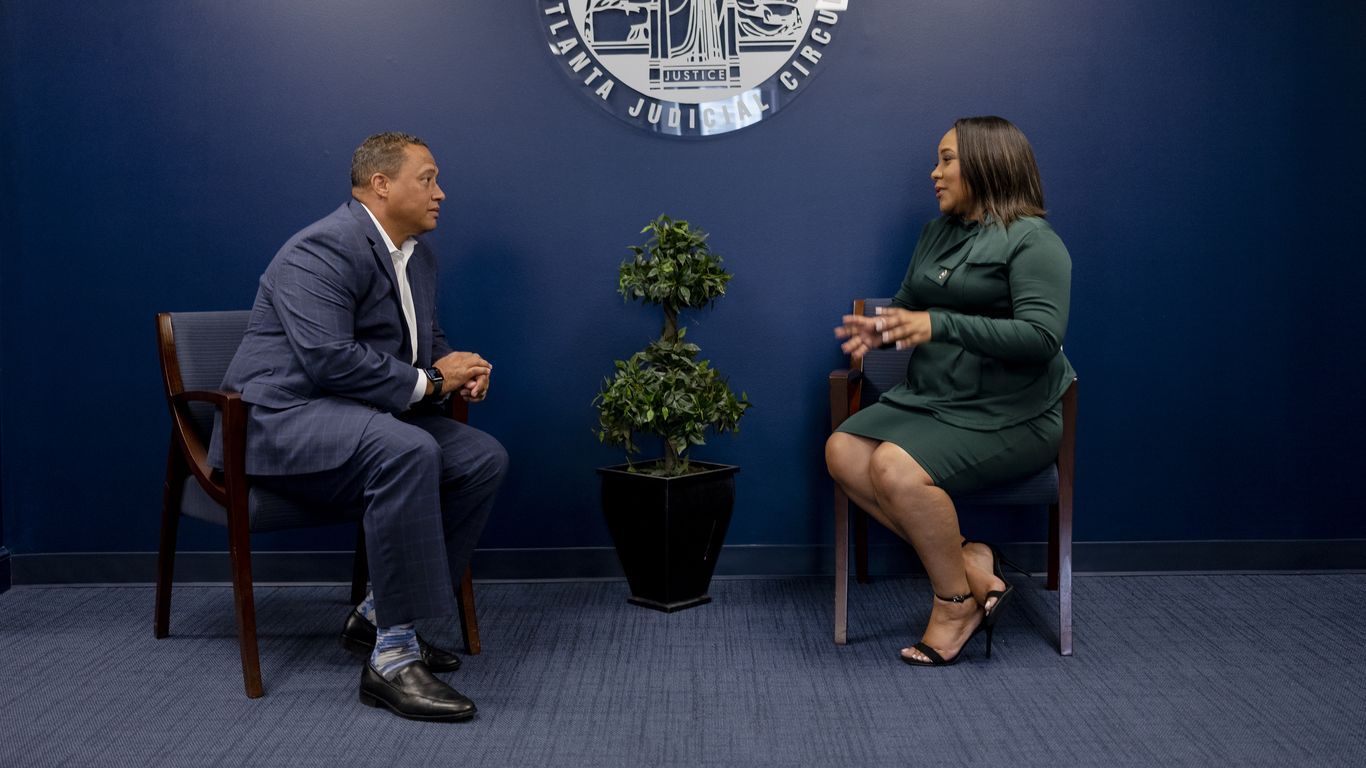SpaceX mission lifts off with former NASA astronaut, three paying customers
Editor’s note: Sign up for CNN’s Wonder Theory science newsletter. Explore the universe with news on fascinating discoveries, scientific advancements and more.
CNN —
A SpaceX rocket carrying a decorated former NASA astronaut and three paying customers took off from Florida Sunday afternoon. The crew is embarking on a weeklong stay aboard the International Space Station.
Their journey, put together by the Houston-based company Axiom Space, marks the second all-private mission to the orbiting outpost. Called AX-2, the mission is making history as stem cell researcher Rayyanah Barnawi becomes the first woman from Saudi Arabia to travel to space.
The crew boarded the SpaceX rocket Sunday afternoon as weather officials kept a close eye on thunderstorms. Florida is entering its summer wet season, making pristine conditions for rocket launches slightly more challenging to find.
Weather officials ultimately gave the all-clear for launch, however, and SpaceX’s Falcon 9 rocket roared to life, carrying the Crew Dragon capsule and its four passengers toward orbit.
The crew is expected to spend the next 16 hours aboard Crew Dragon as it free flies through Earth’s orbit, making careful maneuvers to align itself with the International Space Station. The spacecraft should dock with the orbiting laboratory at 9:24 a.m. ET Monday.
Saudi astronaut Rayyanah Barnawi (far left), former NASA astronaut Peggy Whitson, investor and pilot John Shoffner, and Saudi astronaut Ali AlQarni wave before being brought to the SpaceX Falcon 9 rocket with the Crew Dragon spacecraft for launch from pad 39A at the Kennedy Space Center on May 21, 2023 in Cape Canaveral, Florida. Joe Raedle/Getty Images
The AX-2 mission is one in a lineup of missions that Axiom Space and NASA hope will continue to spur private sector participation in spaceflight — particularly in low-Earth orbit, where the space station lies.
The AX-2 crew is being led by former NASA astronaut Peggy Whitson, 63, now an Axiom employee. With this mission, Whitson also became the first woman to command a private spaceflight.
One of the three paying customers joining her is John Shoffner, an American who made his fortune in the international telecom business and founded the hardware company Dura-Line Corp.
Saudi Arabia also paid to fly two citizens: Barnawi and Ali AlQarni, a fighter pilot in the Royal Saudi Air Force.
“I am very honored and happy to be representing all the dreams and all the hopes of all the people in Saudi Arabia and all the women back home,” Barnawi told reporters last week.
After the Crew Dragon capsule docks early Monday, the AX-2 crew will join seven astronauts already aboard the space station.
The AX-2 passengers will spend about eight days working alongside the existing crew members. During that time, they’ll work through a lineup of more than 20 investigations and science projects — including stem cell and other biomedical research.
The AX-2 crew
This marks Whitson’s first return to space since 2017. Her extensive prior experience on the station made her a US record holder for the most cumulative days logged in space, and she ranks eighth on the all-time list.
Whitson has flown on a Russian Soyuz spacecraft as well as NASA’s space shuttle, but she said preparing for this mission was “obviously different” because it involved training to operate SpaceX’s Crew Dragon, which has only been flying astronauts since 2020.
“That’s been one of the biggest challenges for me is learning this particular spacecraft,” she said. “But I’ve really enjoyed it.”
Barnawi and AlQarni are only the second and third Saudis to travel to space. The first was Prince Sultan bin Salman, who spent about a week on a NASA space shuttle mission in 1985.
Saudi Arabia has faced a barrage of criticism from the Biden administration and Congress over its human rights record, though the ties between the US and Saudi Arabia remain strong.
AlQarni said he believes Arabs’ participation in spaceflight is a “great opportunity” that can inspire the region.
It will “hold a big message. … We are holding hands, we are working together for the betterment of humanity and just trying to innovate,” he said during a news briefing last week.
The future of private spaceflight
This isn’t the first time individuals have paid their way to space. A company called Space Adventures brokered several such missions to the space station in the early 2000s, booking rides for wealthy thrill seekers on Russia’s Soyuz spacecraft.
Here's how much it costs to fly to space 01:19 - Source: CNN
Axiom brought that business model to the United States, partnering with SpaceX to establish a framework for getting an array of customers to the space station. The company’s first mission, AX-1, launched in April 2022 and marked the first time private citizens traveled to the space station from US soil.
Axiom’s goal is to make these missions routine, offering more opportunities for people who are not professional astronauts to experience spaceflight. During a prelaunch news conference, Derek Hassmann, chief of mission integration and operations at Axiom Space, said his company expects to see more customers sponsored by governments similar to the AX-2 passengers from Saudi Arabia.
“Government astronauts are indeed a key piece of our business plan,” he said. “Early in the program … it wasn’t clear to us what the balance would be between private individuals and government astronauts since nothing like this had ever been done before. But it’s become clear to us that the government … market is key, and we’re pursuing that actively.”
Axiom leadership envisions private spaceflight will continue even after the space station is retired, which NASA anticipates will happen in 2030. Axiom is one of several US companies gunning to create a new, privately owned space station. It’s an effort supported by NASA, which aims to bolster private sector participation closer to home so the agency can focus on investing in deep-space exploration.
The AX-2 crew will work alongside the professional astronauts on the space station, though they will operate under different schedules. Once on board, they’ll rely on existing crew to show them the ropes, including the kitchen and bathroom. And certain areas will remain off-limits, such as the air lock that astronauts use to conduct spacewalks, according to Hassmann.
Source: CNN


